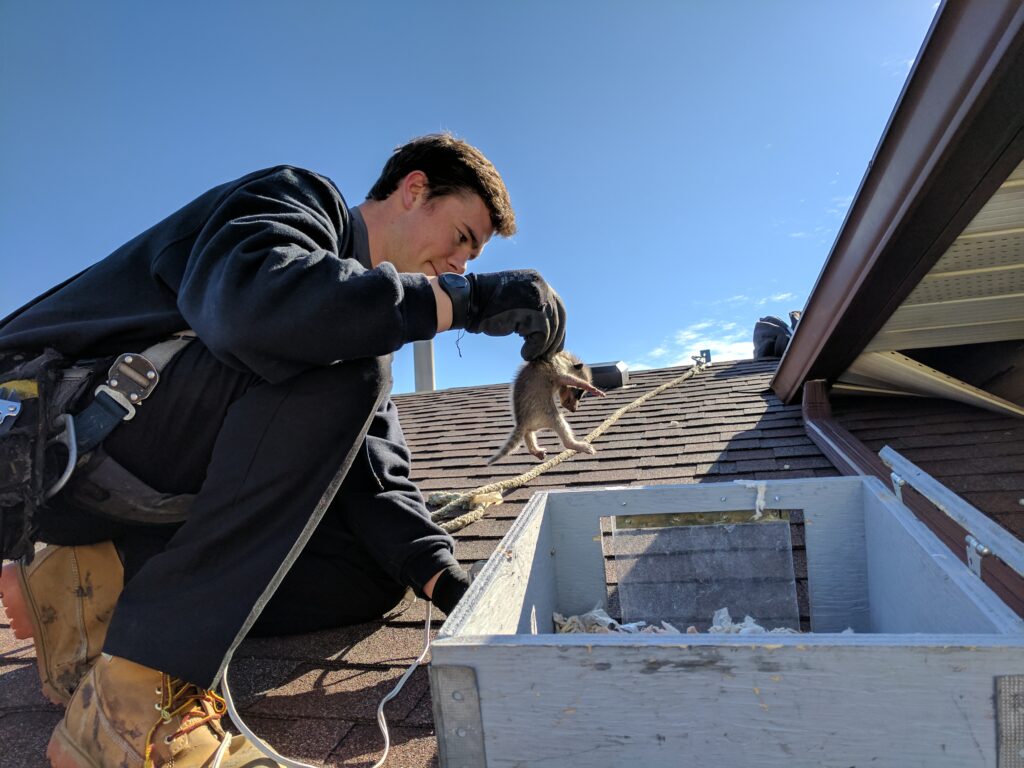There are many creatures that can find their way into your home, one being raccoons. Raccoons are crafty creatures who like to climb and scavenge, often times finding a new home in an attic or crawlspace. Raccoons will often have babies in their new nesting areas, which leads to you not only having a raccoon problem but a raccoon baby problem. What should you do if you spot raccoon babies in your home? Read on to find out!
Discovering the Den

Raccoon babies removed from an attic and placed in a heated reunion box so that their mother can collect them and relocate them to one of her other den sites
So maybe you have noticed raccoons traveling around your home. Have you seen the raccoons going into your attic or possibly heard sounds of walking on the ceiling of rooms in your home? Once you spot a raccoon problem, you will need to find the den and look for babies. Raccoon breeding takes place during January and February and very often inside the attics of houses. However, looking for raccoon babies in your attic can be dangerous. It is often best left to the experts who can quickly search your home and look for clues as to where the raccoons have been living and find any babies that may be present.
Cute and Cuddly

A mother raccoon relocating one of her babies
If you stumble across the den of the raccoons and see babies, you may be tempted to pick them up. While baby raccoons are cute and cuddly, they are also dangerous. They can scratch or bite depending on age and may be infected with a disease passed on by one of their parents. You will also have to contend with a dangerous mother who will fight you fiercely if you touch her babies.
Wildlife Service
Once you know that raccoons are living in your home, or you at least suspect a problem, contact local wildlife control providers. Wildlife control services will ensure that the raccoons are removed from your home and that you no longer have to worry about dangerous animals attacking or being susceptible to any disease or infection.
A technician will visit your home and provide an assessment of your property. Once the issue has been determined, the technician will use humane means to remove the raccoon from the premises. Many times, this will include removing baby raccoons by hand and using them to lure their mother from the attic. We then secure the entry/exit point so that she can’t get back inside and is forced to relocate her babies to on of her other den sites.
Preventative measures can also be taken after removal service to ensure the home is not affected by raccoons in the future. Mesh grating is used to cover any entry and exit points which will deter any raccoons or other creatures from gaining entry in the future.
When you are in need of raccoon removal services, contact our team at Skedaddle Humane Wildlife Control. We are prepared to offer you quality control service to remove any raccoons that you may find on your property. Let us handle the removal and prevention methods so you don’t have to worry about raccoons again!


